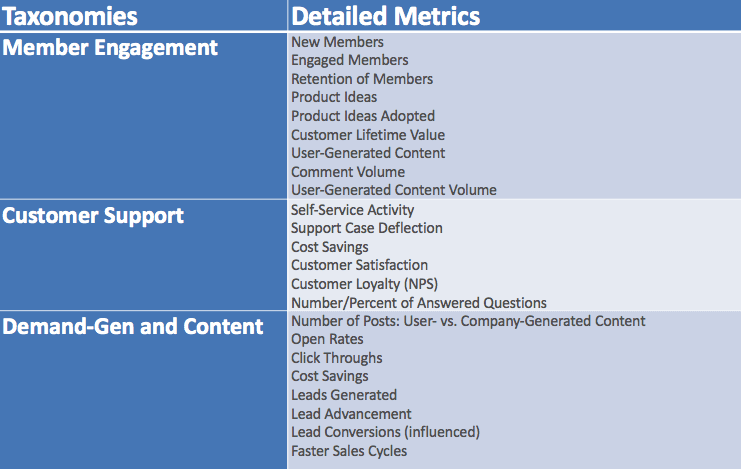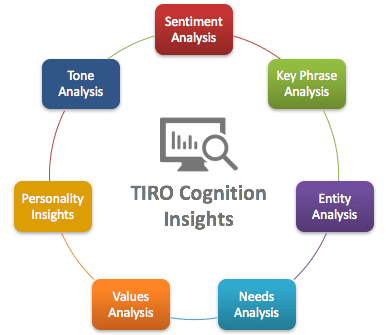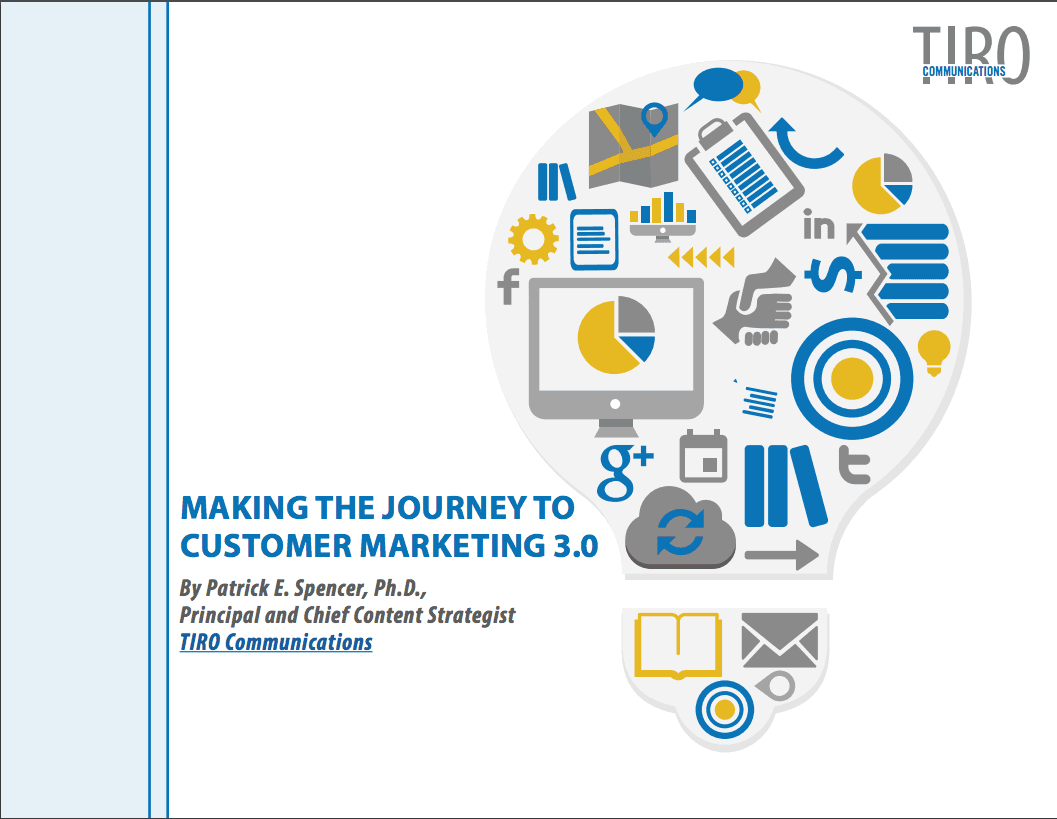Tapping Latent Natural Language in Your Online Communities for Actionable Business Insights
- By Patrick Spencer
- •
- 25 Apr, 2017
- •

The jury is no longer out when it comes to online communities. The evidence undeniably shows that companies with online communities see tangible business returns. For example, a study conducted by the Aberdeen Group uncovered the following:
- Businesses with online communities achieve 54
percent faster annual growth in revenue and see 3.1 times greater customer satisfaction
rates.
- Companies with online communities decrease
customer service costs by 2.6 percent.
- Customer service issues are resolved 37 percent of
the time without escalation to a customer service agent.
Online communities also facilitate better customer engagement, which translates into higher revenues. For example, according to a study conducted by the University of Michigan, customers that are actively engaged in communities spend 19 percent more than other customers.
Mapping Out Use Cases for Online Communities
Online communities serve a number of different functions. Some of the most predominant ones include:
1. Support. As a starting point, customers increasingly prefer self-service when attempting to answer questions or resolve problems. In addition to publishing a knowledgebase of answers to frequently asked questions (FAQ), an online community can connect users with other users who may have already answered or solved the issue as well as support engineers. A report from Parature indicates that 90 percent of your customers expect you to offer self-service via some form of “portal” (online community).
It seems to be working well: according to a report from the Northridge Group, 55 percent of customers who turn to online self-service achieve a resolution. Gartner predicts that web self-service may accounting for as much as 40 percent of all service engagements by 2020. For the latter, Forrester research shows the costs to staff support engineers on community forums (or for that matter monitor social networks and other third-party sites such as Reddit) is immensely cheaper than sourcing all of those customer inquiries to phone, live web chat, or email engagement channels.
2. Content Publishing and Audience Engagement. Some organizations use their online communities for distributing content to their customers and even prospects (often via their blogs). If done correctly (viz., not marketing fluff and messaging), content on your online community—that which you produce and that generated by customers—is seen as authentic and holds greater credibility. Those communities deemed most mature by The Community Roundtable adhere to a 50/50 ratio (user- versus company-generated content). Interestingly, in terms of use cases, communities where content is listed as the number one business objective have the largest average member size, according to a recent study by CMX and Influitive.
The value of online community content for the customer journey is much greater than what many assume. A research study by Demand Metric found that content is rated “extremely valuable” across all stages of the funnel:
- Discovery, 50%
- Consideration, 59%
- Purchase, 51%
- Retention, 76%
- Advocacy, 74%
3. Product Ideation and Insights. Product teams find it difficult to secure feedback from customers on their experiences using their products. It’s difficult to get substantial time with users to capture their use cases and insights. Online communities provide product teams a chance to capture unfiltered feedback from an engaged customer base. Larger communities can span smaller communities or forums comprised of users with more like-minded interests (e.g., specific products, features, industry segments, etc.).
4. Demand-Gen Results. Demand Gen Report in a study commissioned by Demandbase found that 73 percent of B2B companies with online communities report that they support the buying process. Buyers concur. Sixty percent of they say they seek out peer reviews on online communities and third-party review sites before making a purchase decision. And communities are cited as the number one resource used by buyers. Of course, quality content is a critical enabler, increasing what is described as a spillover effect by 30 percent (lead advancement).
5. SEO. Publication of quality content that answers query intents generates search results. With questions and answers comprising a significant portion of content within an online community, this coincides closely with search intent—a core part of the Google Fred algorithm update. Additionally, as various companies publish their blogs within their online communities, this provides them with an opportunity to drive search traffic to their sites (specifically communities).
6. Advocacy. This is an area that has come to the forefront in the past few years. The aforementioned report by CMX and Influitive finds that acquisition and advocacy are the second most cited business objectives (23 percent) for companies that have online communities. So, why is this the case? Companies with online communities find that customers are more willing to advocate on their behalf. Better engagement, along with gamification, turns customers into advocates.
7. Partner Engagement. A key pain point for many partner programs is what many call the “partner portal.” These often reside on dated technologies, resulting in non-intuitive interfaces, substantial maintenance costs, and lengthy content posting processes. All of this translates into poor partner utilization. Some businesses are turning to online communities as a means to transform this experience by engaging partners via two-way communications. Take SAP as an example. The company built a community-powered partner management solution that helped it improve lead conversion rates by 27 percent while cutting costs by 20 percent.
8. Employee Engagement. Studies show that a minority of employees indicate they are engaged. In a study conducted last year, Gallup found that less than one-third of workers in the U.S. qualify as engaged. Worldwide the numbers are even worse, with the numbers pegged at an astonishing 13 percent. Online communities are one way companies are addressing these dismal numbers. Not only are employees more engaged when they participate in an online community, but they also are more likely to advocate on behalf of the company.
Measuring the Metrics of Online Communities
Despite all of the positive news and momentum around online communities, a sizable number continue to struggle with issues such as user adoption and engagement, consistent and sustained support, and even survival. Gartner believes 70 percent of online communities are destined to fail. There are a number of reasons such as an imbalance in vendor- versus member-generated content, outdated or inaccurate content, subpar engagement and utilization rates, missing pathways to facilitate peer-to-peer relationship building, and inadequate promotion. The list could go on.
Research from The Community Roundtable demonstrates that those organizations able to tie meaningful metrics to their communities have a much greater likelihood to succeed. Best-in-class communities are twice as likely to measure behaviors and outcomes than their peers. The Community Roundtable places metrics at the very center of a community’s charter: “The growth and success as a strategic approach is something in which all of us who have been involved with building communities can take pride. In the long run, though, our good feelings won’t be enough. We must focus on the measurable benefits of community approaches for customers, employees, partners, leaders, and organizations alike. The data and stories are there.”
So, what are these measurements and how are they used? The Community Roundtable pinpoints 14 metrics:
- Total Activity
- Total Members
- Active Members
- Contributing Members
- Volume of Comments
- Content Views, Opens, and Clicks
- Volume of New Content
- Questions Answered
- Influencer Identification
- Time to First Response
- New Member Activity
- Mobile Activity
- Behavior Flows and Conversions
- Resolution Time
CMX and Influitive spell out 21 areas of measurement:
- Retention
- New Customers
- Customer Satisfaction Ratings
- Customer Loyalty
- NPS Score
- Change in Sales Revenue
- Customer Lifetime Value
- New User and Member Signups
- Number or Percent of Answered Questions
- Usage
- Self-Support Activity
- Case Deflection
- Cost Savings
- Reach
- Number of Active Users and Members
- Product Ideas
- Product Feedback Implemented
- Number of Posts
- Adoption
- Amount of Content Shipped or Approved
- Market Share
As a long list of behavioral (or numerical) data is cumbersome and difficult to use, we would like to propose a taxonomy that places each of the different data points into groupings (see below).

Turning Latent Community Data into Actionable Insights
All of these numerical metrics are valuable and are useful indicators as to the health of an online community and to its contribution to business results. But are these sufficient when it comes to capturing the actual voice of the customer? Would data analytics that combine numerical and natural language analysis produce deeper and broader business insights that numerical data within a silo? Are community managers leaving “data” on the table that resides within their communities that could be used for further business insights? Let’s return to these questions in a moment.
The Community Roundtable groups communities into four categories based on eight competencies, metrics and measurements being one of them:
Stage 1: Hierarchy. Use social technology or community structures in an ad hoc manner. Community strategy is lacking and resources have not been allocated. Metrics and measurements are not in place.
Stage 2: Emergency Community. Resources are dedicated to formalizing policies and processes for advocates, content creation, and reporting.
Stage 3: Community. Community is well-established and community managers are able to match metrics to progress. Advocates and members collaborate with each other.
Stage 4: Networked. Community plays a critical role in the business and shared measurements and processes exist between the community and different departments. Metrics and measurements track to shared business outcomes.
If you look at the list of metrics used to evaluate the health and success of communities and voice of the customer, you’ll find that they are all numerical. And in the event that a community uses natural language processing (NLP) for analysis and reporting, the focus is on sentiment and key-phrase analysis only. Further, cognition and numerical analytics are not overlaid on top of each other to create more meaningful insights. The result: online community analytics tell us if the communities and content are being used, but they do not tell us why and how. This only becomes possible when we employ NLP.
For mature online communities with substantial numbers of engaged members and repositories of content (user- and vendor-generated), there is a huge amount of latent data waiting to be tapped for business intelligence (BI). “The vast majority of online communities only look at transactional data—and at best, content traffic and utilization, with some of the behaviors of members, etc.,” says Rick Graves, former senior director of Symantec Customer Communities and Advocacy. “The next level of maturity is to start looking at natural language and what customers are actually saying, combining and correlating this qualitative data with the transactional data to produce even more actionable insights.”
The good news is that we designed Cognition Insights to address this precise opportunity. Able to work with structured and unstructured data types, numerical and natural language, Cognition Insights can provide powerful business insights about your online communities that enable you to drive engagement rates, improve content utilization, increase funnel advancement and lead conversions, drive customer satisfaction, identify and engage advocates, and much more.
With that in mind, let’s look at a few examples of how NLP can be used to analyze your community data to produce actionable business insights that can be used across the business.
Scenario 1: Sentiment Analysis. Cognition Insights can be used to analyze sentiment across user groups, product, industry, spend, etc. This involves an overlaying of CRM data and tags across natural language and analyzing for segment broken out across each of those CRM-related categories. These sentiment scores can be used as part of the customer health (or voice of the customer) score in the CRM or, if a score doesn’t exist in the CRM, as their health score.
Scenario 2: Key-phrase and Semantic Analysis. Cognition Insights can be used to identify top issues that customers are talking about—both positive and negative—that can be fed back to your support and product teams. Here, we overlay sentiment analysis on top of key-phrase and semantic analysis. In the case of support, they can develop scripts and processes that expedite the remediation of these issues. In the case of product, they can go back and make those fixes on the product side and push out new releases of their product.
Scenario 3: Persona Analysis. Cognition Insights analyzes natural language of your customers based on their needs, values, tone and semantic preferences, and personality profiles. We use this data to define customer personas and to help you segment customers and to target the right activities and content to them. This results in higher community engagement, improved content utilization rates, more advocates, increased advocacy rates, and higher member (whether customers, partners, or customers) satisfaction.
Scenario 4: Content Analysis. Cognition Insights enables you to look beyond behavioral data to the why behind it. The ability to understand why content resonates or doesn’t resonate with community members allows you to pinpoint content gaps, scale down in areas that aren’t producing results, and scale up in areas where results are being generated. The result is better content utilization rates and potential reductions in the time and cost to create content. For communities with demand generation as a focus area, content adjustments can also result in improved lead advancement and higher conversions.
Scenario 5: Demand-Gen (Consumption Funnel) Campaigns. Create consumption funnel campaigns—inside and outside of your online community—that target your customers based on persona segments. These campaigns are personalized to fit your different persona segments that are tagged accordingly in your CRM. The result are consumption campaigns that produce better results such as existing account revenue growth and improved customer and partner advocacy.
This is an exciting time for online community owners who have the right strategy and resources. You can do some truly remarkable things with your communities, and demonstrating the business value in terms of both numerical- and natural language-driven metrics as well as tapping your huge reservoirs of latent data for actionable business insights will turbocharge your efforts. Find out how Cognition Insights can help you scale your community by signing up for a demo today.













